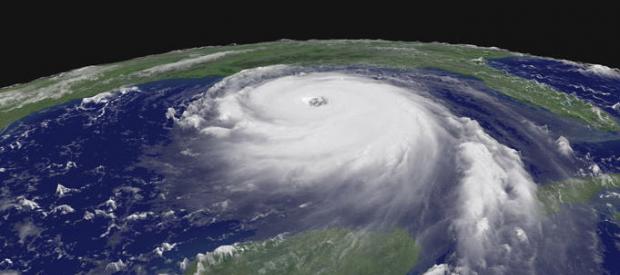If you live anywhere on the East coast, I’m sure at some point in your life you have had at least one run in with a hurricane. As we head into the “active” months of hurricane season, it is important that you spend some time thinking of how you would protect your aquarium should one of these storms heads your way.
Alternative Power Sources
If you live in an area that is prone to hurricanes, the number one thing you can do to protect your investment is have a plan to keep power available to your system. Thankfully, there are a quite a few viable options on the market that would work well for sustaining an aquarium during an outage.
A gas powered generator is probably the best solution to keeping power running for your aquarium. Not only can you keep your refrigerator running, but you can maintain most of your aquarium systems without out much trouble. If you are going to be using a gas powered generator, make sure you have all the necessary cables readily available before the storm hits and you that you follow all safety regulations in regards to ventilation and drip loops. You can also use a generator that is tied directly into your home’s circuit breaker, but we can not stress enough, if you are going to use that sort of a generator, please make sure you are well versed in its operation. A simple mistake, such as not having your circuit breaker turned off to outside power, could result in the destruction of most of your appliances and aquarium electrical systems. Another viable option is employing the use of an inverter. Simply, an inverter converts DC power stored in batteries into clean, quiet household AC power. You can run the inverter with free standing batteries, or even connect it to your car battery if needed. The advantage in the inverter over the generator, is that the inverter and battery can be kept inside and do not require the ventilation that the gas generator demands.
Another less expensive, short term solution would be the use of a battery back up, such as an Ecotech Battery Backup. By adding a battery backup to your system, you can continue to run your pumps and in some cases your lighting for anywhere from 20 to 60 hours. There are many different battery back up units on the market today and you will need to evaluate your needs before you make your selection. It is not a one size fits all solution, so make sure you know what kinds of power you will need before you make your purchase.
Water
The next consideration, in regards to preparedness, is making sure you have plenty of supplies and prepared water. Depending on the severity of the storm, you may find yourself without power or the ability to restock supplies from anywhere from a few days to a few weeks. If your local fish store is damaged during the storm, for example, you may not be able to quickly replenish your additives and foods. If your town’s water supply or electrical grid has been damaged, it could take time to restore water to your home. Take a few minutes prior to the arrival of the storm to take inventory of the items you use on a regular basis (additive, foods, salt, etc) and make sure you have 2 – 3 weeks worth in reserve. In addition, use the days preceding the storm to prepare a reservoir of clean, “ready to use” water for your aquarium. You will need to evaluate the needs of your system to determine how much water will be needed. The severity of the storm will also determine the number of days for which you should be prepared. Make sure that any containers you are using to store back up water are clean and free of chemicals that would harm your aquarium inhabitants.
Lastly, in the days before a storm hits, you should spend some time making sure your water parameters are as close to perfect as possible. Once the power goes out, it will be easier to stay on top of problems in your aquarium if you are starting with good water quality.
Safety
Outside of preparing your aquarium, you also need to put some thought into protecting your investment. From the fish down to your protein skimmer, you have invested a lot of time and money in your aquarium and the last thing you want to have happen is see something destroyed because you forgot to make sure it was protected. It is a good idea to make sure you have surge protectors in place on your skimmer, controllers, pumps, etc and you may want to add check valves on all air lines to prevent back siphoning. If your aquarium is in a room with a window, you may want to make sure you have some sort of barrier in place to help prevent any debris from getting into your aquarium should the window break. It may seem like overkill, but if you have a large storm heading your way, the possibility that you will have a branch come through your window is very real and you do not want your aquarium destroyed because you didn’t think it was necessary to cover the window.
After the Storm
If during the storm you did lose power, you will want to spend some time afterward reviewing your aquarium systems for damage. Is your controller still running with the settings you had programmed? Are all pumps operational? Is your protein skimmer working properly? You will also want to test your water to make sure your parameters are as they should be. If you are concerned about your aquarium having issues from mini-cycling after the power loss, you can also use items such as a Poly Filter Pad by Poly Bio Marine to catch impurities and help get your water quality back to normal.
The best thing you can do to prevent a problem with your aquarium is to put some thought into how you can protect it. Hopefully this guide has given you at least a starting point as to what you will need to do to get ready for “The Big One!”







Pingback: Columbia,SCPreparedness | AquaNerd()